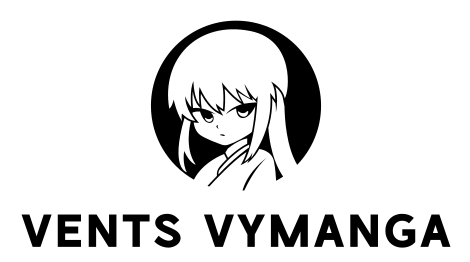Introduction
The world of design and technology thrives on color, and hex codes play a pivotal role in defining and communicating these colors. Among the myriad of hex codes, D300 stands out as a bold and vibrant shade. This article delves into the essence of the D300 hex code, exploring its characteristics, applications, and the science behind its creation. By the end of this detailed exploration, you will have a comprehensive understanding of D300, its impact on various fields, and how to leverage it effectively in your projects.
What is a Hex Code?
Before diving into the specifics of D300, it is essential to understand what a hex code is. A hexadecimal color code is a six-digit alphanumeric representation of a specific color used in digital design. It combines red (R), green (G), and blue (B) values into a single string, written in the format #RRGGBB. The values range from 00 to FF (0 to 255 in decimal), defining the intensity of each primary color. For example, #FFFFFF represents white, while #000000 is black.
Hex codes are universal in digital platforms, ensuring consistency across web design, graphic design, and other digital media. They are also supported by programming languages like HTML, CSS, and JavaScript, making them indispensable for designers and developers alike.
Decoding the D300 Hex Code
The D300 hex code translates into a specific RGB composition:
- Red (R): 211 (D3 in hexadecimal)
- Green (G): 0 (00 in hexadecimal)
- Blue (B): 0 (00 in hexadecimal)
This combination produces a striking and intense red hue. The dominance of red with no green or blue contribution makes it a powerful and attention-grabbing color.
Characteristics of the D300 Hex Code
- Vibrancy: The high red value gives D300 an energetic and vibrant appearance.
- Emotionally Evocative: Red is often associated with passion, urgency, and importance, making D300 ideal for calls-to-action or elements that require immediate attention.
- High Visibility: Its bright and saturated tone ensures that it stands out against contrasting backgrounds, enhancing visibility and readability.
- Versatility: Despite being a bold color, D300 can complement various palettes when used thoughtfully.
Applications of the D300 Hex Code
1. Web Design
In web design, colors are more than aesthetic choices—they influence user experience and behavior. D300 is often used for buttons, alerts, and notifications due to its attention-grabbing quality. For instance:
- Call-to-Action Buttons: A “Buy Now” or “Subscribe” button in D300 can drive conversions by standing out.
- Error Messages: Red is universally associated with errors or warnings, making D300 a natural choice for such alerts.
- Highlighting Important Text: Headers or key points in this color draw the reader’s focus.
2. Graphic Design
In graphic design, D300 can be used to create bold and impactful visuals. Its applications include:
- Branding: Companies aiming for a passionate and energetic brand image may incorporate D300 in their logos or marketing materials.
- Posters and Flyers: The vibrancy of D300 makes it perfect for promotional content.
- Illustrations: Artists use it to depict emotions like love, anger, or urgency.
3. Fashion and Interior Design
Colors influence mood and perception in fashion and interiors. D300 can:
- Make Bold Statements: Red clothing or furniture in D300 adds drama and intensity to designs.
- Create Focal Points: A single item in this shade can serve as a striking centerpiece.
4. Advertising
In advertising, the psychological impact of colors is crucial. D300 is effective in:
- Eliciting Strong Emotions: Ads using this shade can evoke passion or urgency.
- Driving Action: Limited-time offers or “Act Now” campaigns often utilize bold reds like D300.
5. UI/UX Design
User interfaces benefit from the strategic use of colors. D300 can enhance:
- Navigation: Active tabs or selected items can use this color for clarity.
- Engagement: Bright colors like D300 keep users engaged and focused.
How to Use the D300 Hex Code Effectively
- Balance with Neutral Colors: Pairing D300 with neutral tones like white, black, or gray ensures it doesn’t overwhelm.
- Consider Accessibility: Ensure sufficient contrast between D300 and background colors for readability.
- Strategic Placement: Use D300 sparingly to highlight critical elements rather than saturating the design.
- Test Across Devices: Different screens may display colors slightly differently, so testing ensures consistency.
Science Behind the D300 Hex Code
The perception of color is rooted in physics and biology. The dominant red wavelength in D300 is around 620-750 nm. This wavelength stimulates the red cones in the human eye, producing the vibrant and intense color we see. The psychological impact of red—ranging from urgency to warmth—further amplifies its effectiveness in design.
Challenges in Using the D300 Hex Code
- Overuse: Excessive use can overwhelm viewers, reducing its impact.
- Cultural Sensitivity: Red holds varying connotations across cultures—symbolizing love in some and danger in others.
- Compatibility: Ensuring it harmonizes with other colors in the palette can be challenging.
Conclusion
The D300 hex code is a powerful tool in the arsenal of designers and developers. Its bold and vibrant red hue commands attention and evokes strong emotions, making it ideal for a range of applications from web design to advertising. However, its effectiveness lies in thoughtful and strategic use, ensuring it enhances rather than dominates a design.
By understanding its characteristics, applications, and challenges, you can leverage D300 to create impactful and visually compelling designs.
FAQs
1. What RGB values correspond to the D300 hex code?
The D300 hex code corresponds to RGB values of Red: 211, Green: 0, Blue: 0.
2. Can D300 be used in printed designs?
Yes, but it’s essential to convert the hex code to CMYK values for accurate color representation in print.
3. Is D300 accessible for all users?
To ensure accessibility, pair D300 with high-contrast backgrounds and test readability for users with visual impairments.
4. What emotions does D300 evoke?
D300, as a bold red, evokes emotions like passion, urgency, love, and importance.
5. How can I complement D300 in a color palette?
Neutral tones like white, black, and gray work well. For more dynamic palettes, consider complementary colors like teal or muted greens.
Also Read This: Understanding the D300 Hex Code: A Deep Dive into Its Significance, Applications, and Usage in Design



